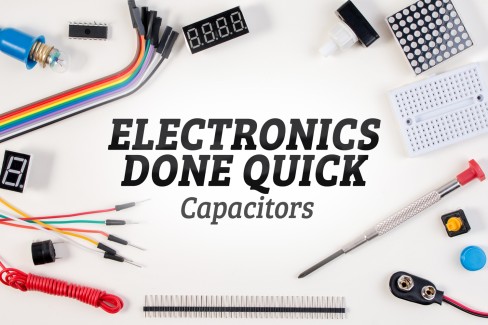Capacitors are like batteries, in a sense. They can accumulate a charge and discharge at a given moment. However, what differentiates them from batteries are their capacity and discharge rate. In most cases, they can hold less charge than conventional batteries but can charge and discharge at a way faster rate. This rapid rate can be useful in applications like the camera flash, while a battery cannot release enough electricity at once to generate a pulse of light bright enough, it can certainly charge a capacitor which can then release energy at a way faster rate, making the flash brighter.
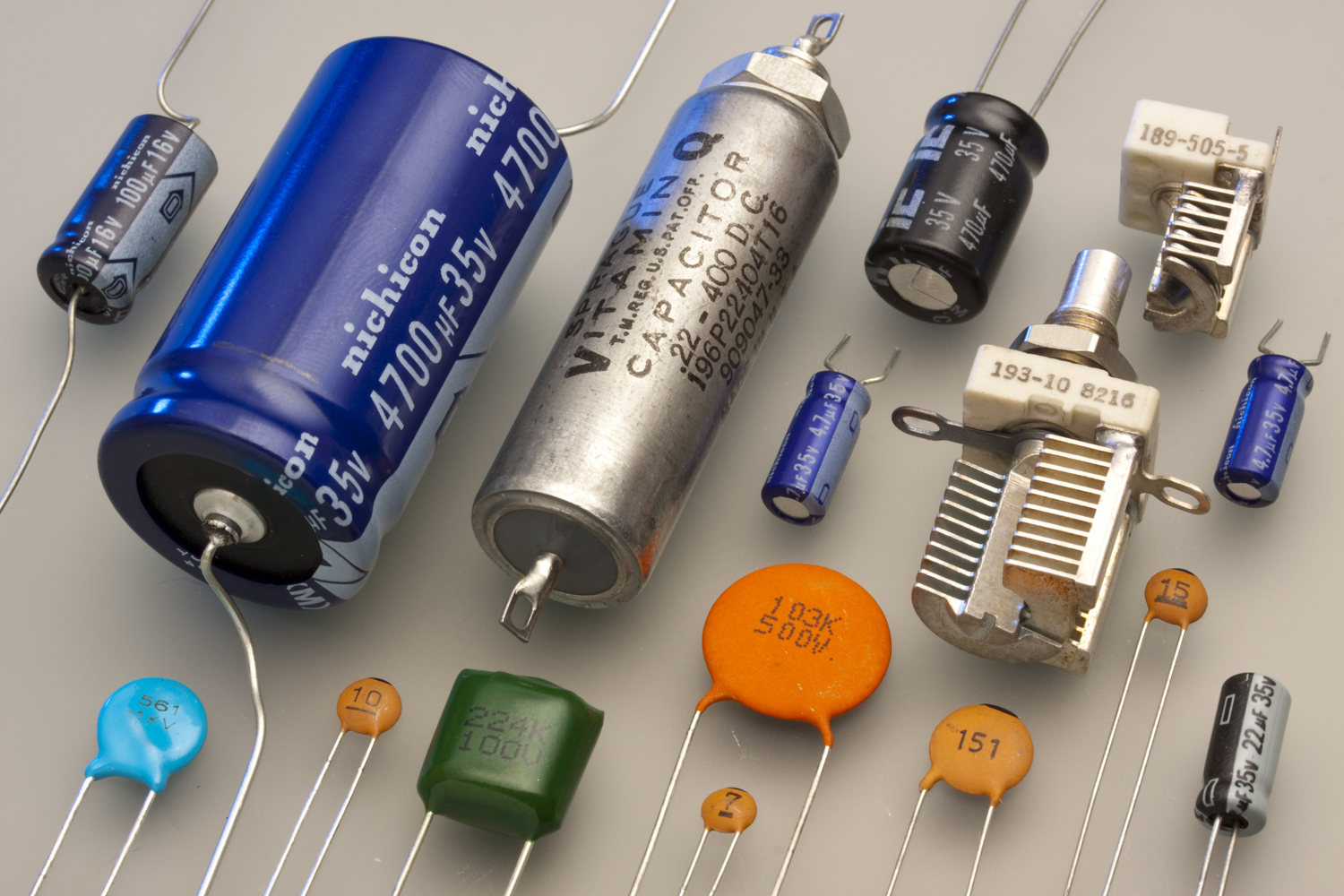
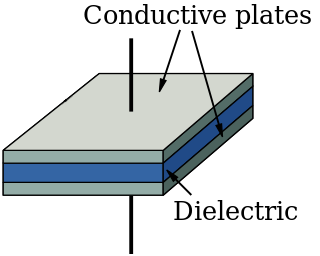
Source: Wikipedia
A capacitor consists of two conductive plates separated by a non-conductive dielectric material. They have two ratings, one for maximum voltage it can handle and one for capacitance, the amount of charge it can store. The capacitance is measured in "Farads". Since a Farad is a very large unit of capacitance, smaller units are often used:
- Microfarad (μF) 1 μF = 10 ^ -6 F
- Nanofarad (nF) 1 nF = 10 ^ -9 F
- Picofarad (pF) 1 pF = 10 ^ -12 F
Small capacitors can be difficult to read, due to the limited space available on them, so ratings are written in different codes. Here is a useful guide on how to read them.
The capacitor can have fixed or variable capacitance. Fixed capacitors can be polarized or non-polarized. Non-polarized capacitors can be connected in any direction and still function the same way while polarized capacitors can only be connected in one direction and therefore, are often marked with a stripe that indicates the negative pin. They might also have a longer positive pin.
Variable capacitors have a capacitance that can be adjusted when needed (e.g. to tune a radio). Therefore, it is sometimes called a tuning capacitor. Trimmer capacitors are miniature variable capacitors that can be adjusted with a small screwdriver. They are available in a very small capacitance (500 pF or less) and are non-polarized. They are often used to initially calibrate equipment after manufacturing.
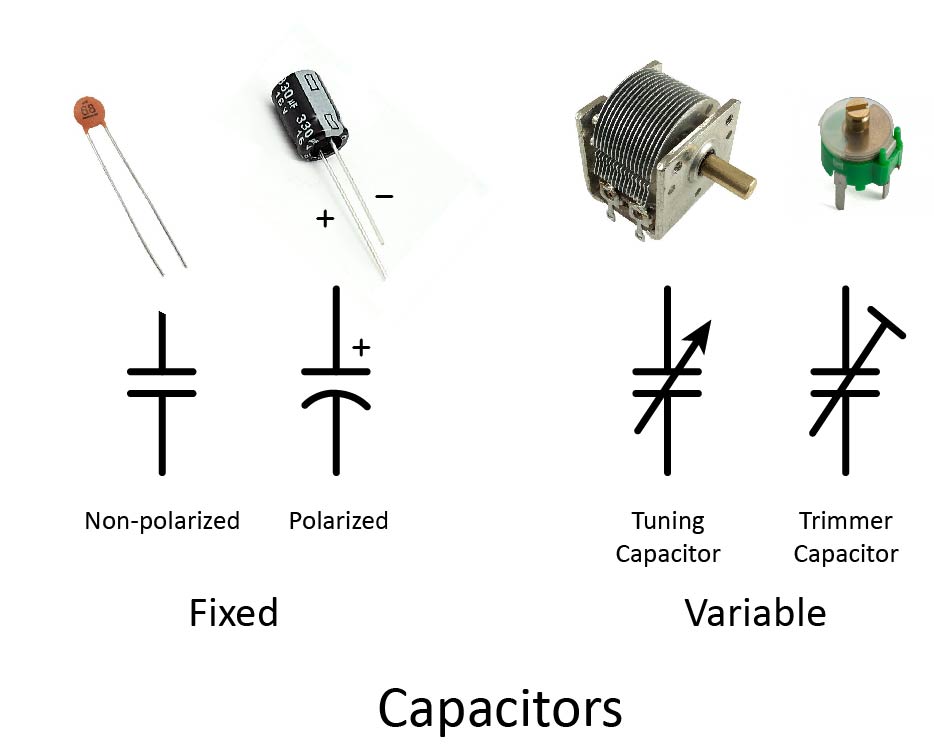
We can take advantage of the faster charge and discharge rate of the capacitor by plugging it into an AC power source along with some diodes to flatten the curve of the voltage and produce a somewhat direct current (DC). When the alternating voltage drops below the capacitor's maximum charge, the latter tends to discharge, thus stabilizing the voltage. This is called a rectifier, or full-wave rectifier. Here is the circuit and how the capacitor flattened the waveform providing a direct current through the load.

You can also watch this video for more details about how the full wave rectifier works.
Capacitors can also be used for coupling (passing through the alternating part of a signal and filtering out the direct part), for decoupling (passing through the direct part of a signal and filtering out the alternating part), or as filters that block undesired frequencies or noise.
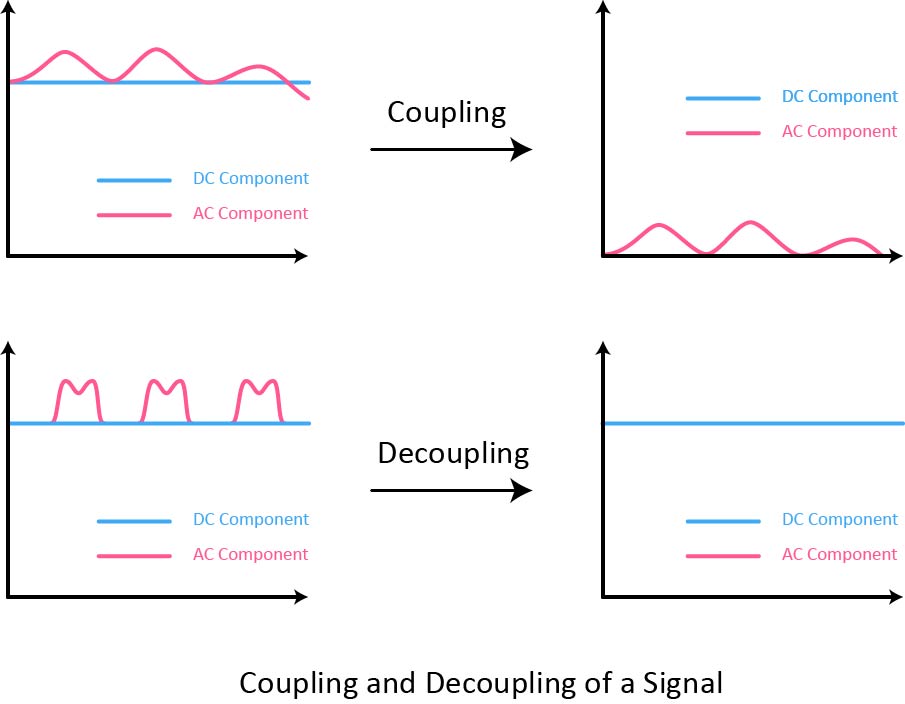
In this section, I will be talking about different types of capacitors and their properties. Please note that this list is not exhaustive and will only contain the most commonly found capacitors.
Paper Capacitor
Not commonly used anymore but you will find a lot of them in older or cheaper electronics. These are non-polarized and made from layers of paper and pure aluminum. They have a low resistance to aging and will leak more and more current over the years. They are intended for low or medium frequency ranges.
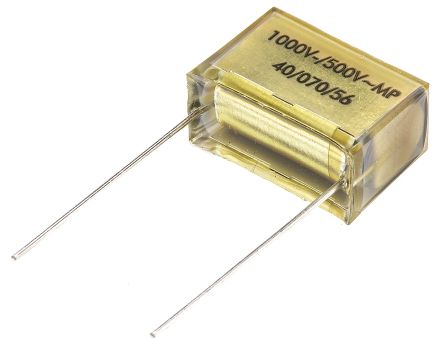
Source: RS Components
Ceramic Capacitor
These are non-polarized capacitors made from two or more alternating ceramic and metal layers where the ceramic acts as a dielectric and the metal as the conductive plates. These are commonly used in high-frequency circuits and in higher-temperature settings.
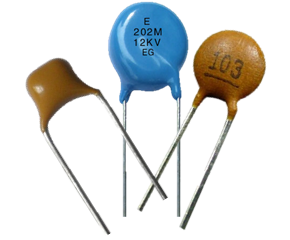
Ceramic Capacitor from RobotShop
Film Capacitor
Film capacitors, also known as plastic film capacitors, are cheap and efficient in a wide variety of frequencies. They are made from alternating layers of metal (mostly aluminum) and a variety of plastics including but not limited to polyester, polypropylene, or Teflon. They are non-polarized and can withstand high voltages.
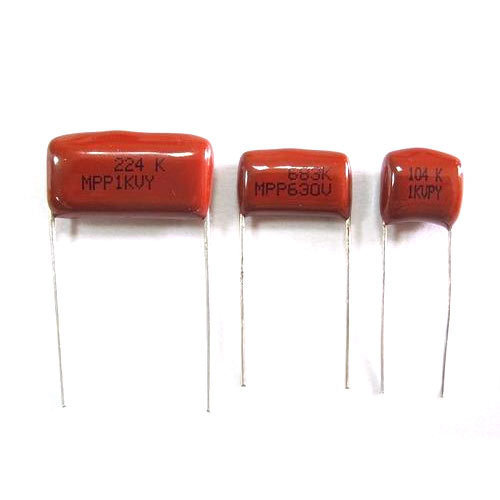
Source: IndiaMART
Electrolytic Capacitor (aluminum)
This type of capacitor is made from multiple aluminum layers separated by either an oxide layer or an electrolyte. Since the dielectric is comprised of two different materials, it is not symmetrical and therefore is polarized. This means it has an orientation and can only be used in DC circuits.
This type of capacitor is used for its higher capacity but cannot be used in higher frequencies.
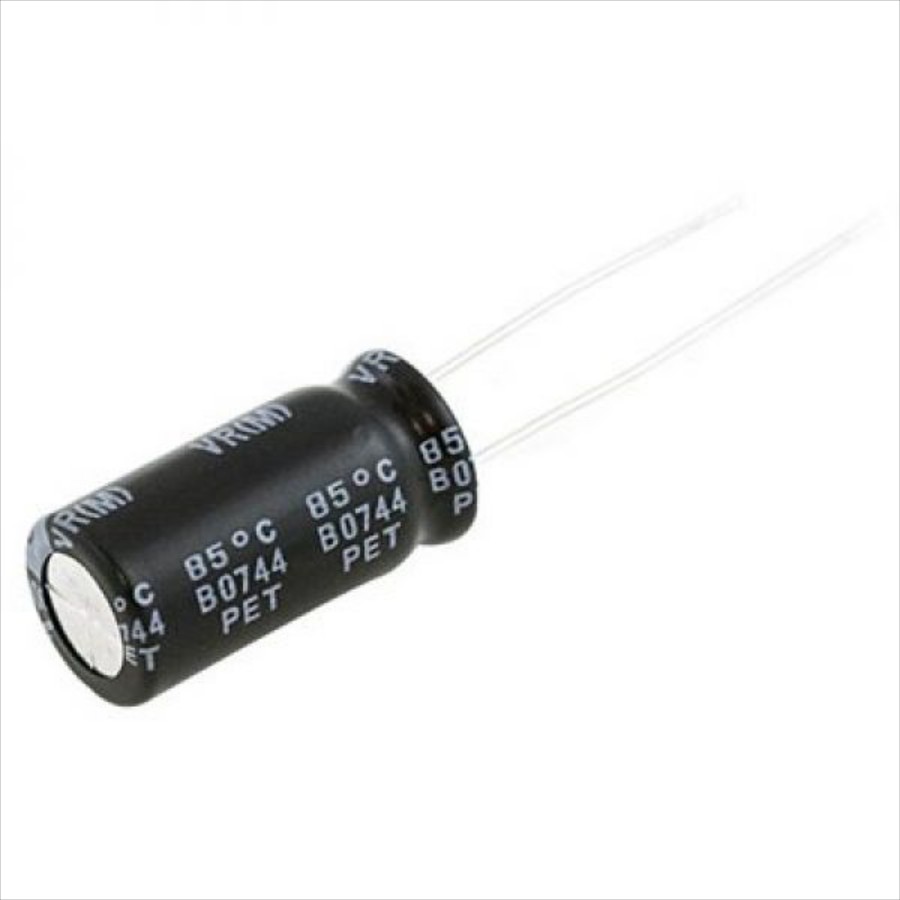
Electrolytic Capacitor from RobotShop
Tantalum Capacitor
Tantalum capacitors are also polarized electrolytic capacitors. Unlike the ones made from aluminum, these can be used in higher frequencies but lack their greater capacity. We can usually find those in miniaturized systems.
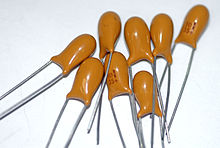
Source: Wikipedia
Capacitors in Parallel
Just like resistors in series, values of capacitors in parallel are simply added together.
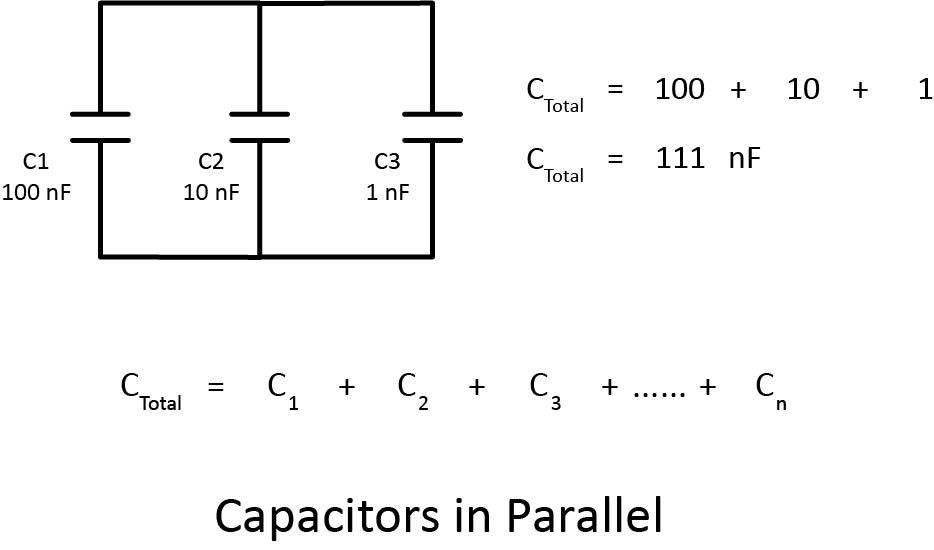
Capacitors in Series
When they are connected in series, capacitors behave like resistors in parallel. The following formula can be used to calculate the total value.
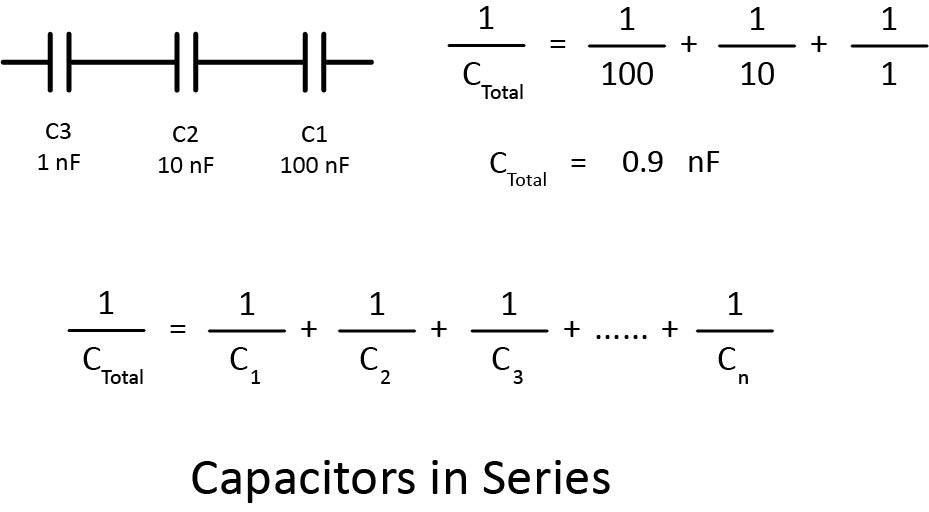
Whenever you're tasked to calculate the equivalent capacitor in a circuit comprised of both capacitors in series and in parallel, always start by reducing the ones in series, then do the ones in parallel.
The charging and discharging processes of capacitors are not instantaneous. Its charge rather follows an exponential curve which can be calculated at any given time (t) with the following formulas.
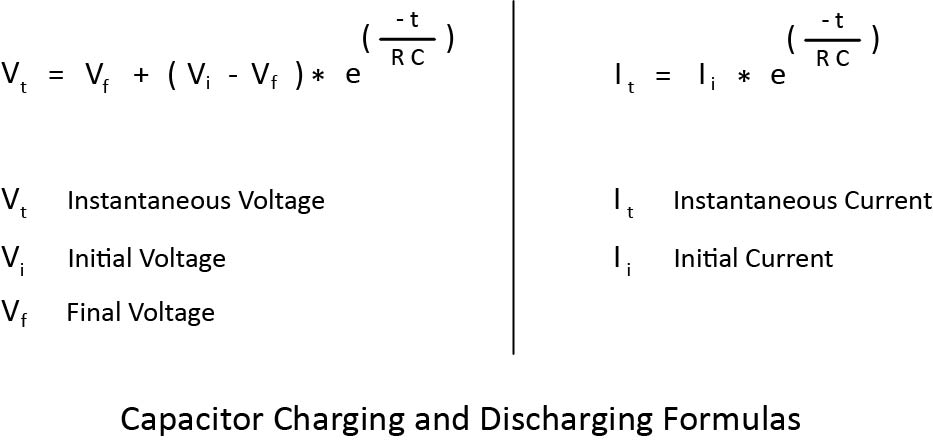
I have built a graph using the formula for an RC circuit with a capacitor rated at 10 V, 100 μF, and a resistor of 10 KΩ.
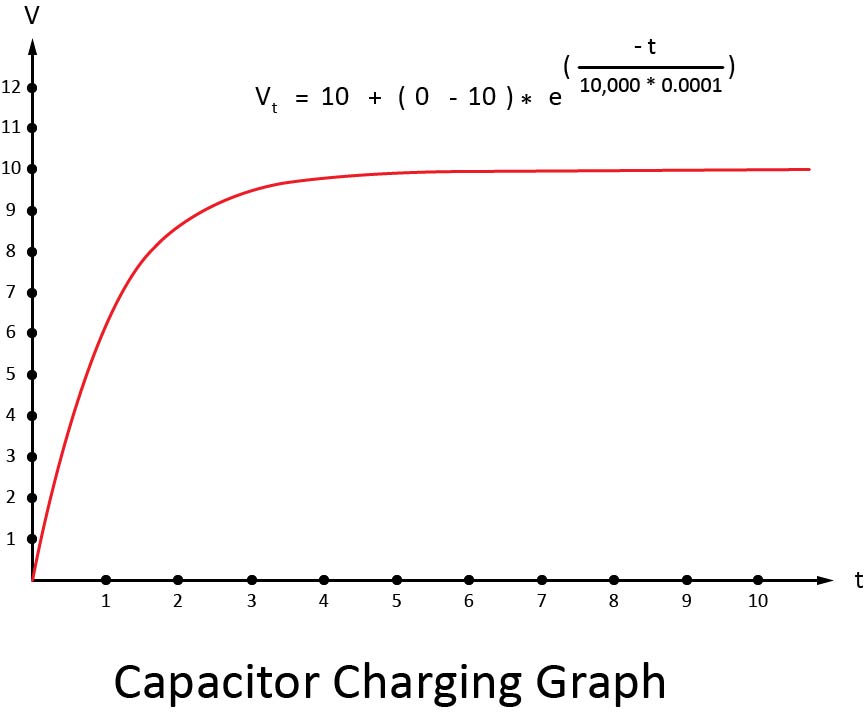
Capacitors are an essential part of most electronic circuits from smoothing the voltage coming from the AC power source to charge your phone, to blocking AC or DC components in a signal, to filtering out noise in communications.
Don't forget to check the voltage rating of your capacitor, unless you want it to share the same fate as one of these poor capacitors in this video:


